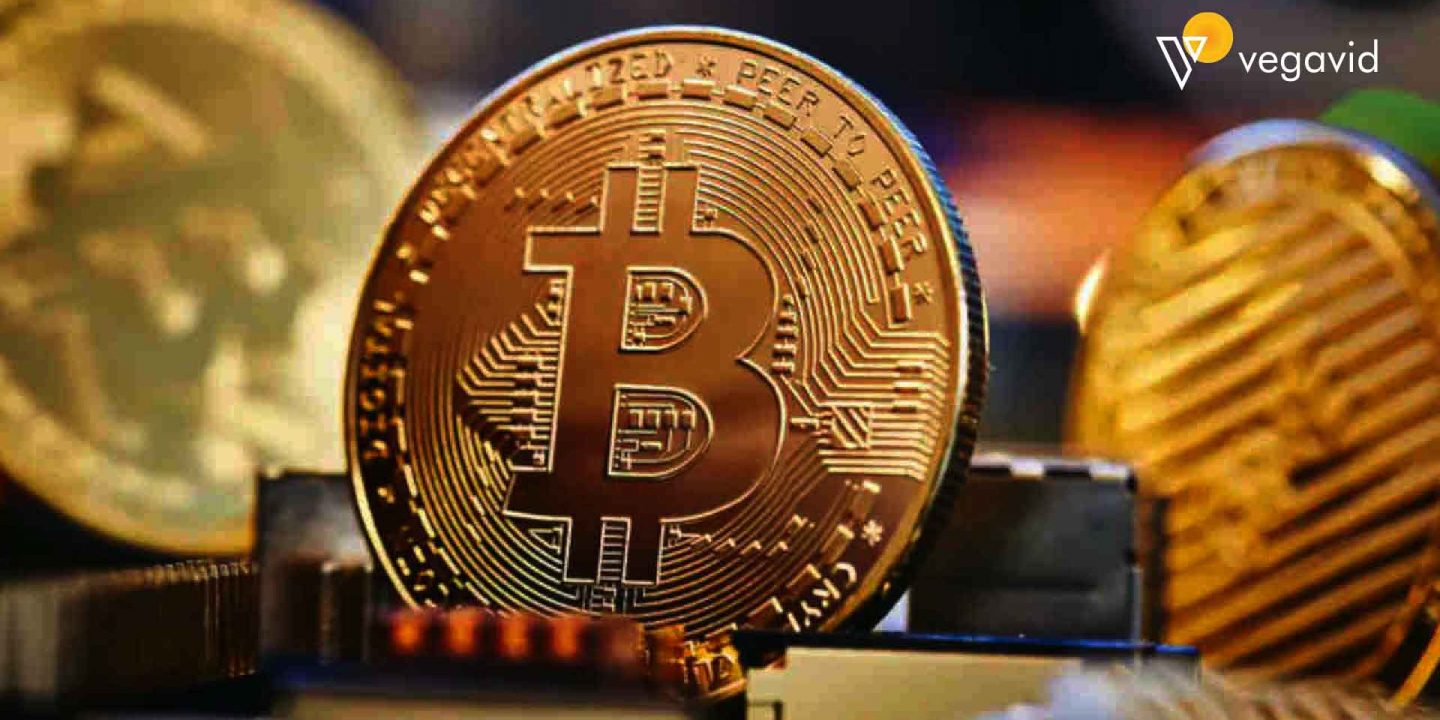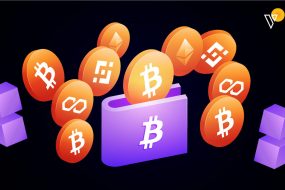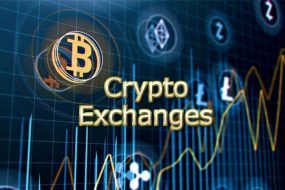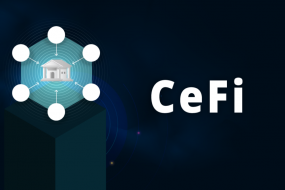
Wrapped tokens represent digital assets in the form of crypto tokens backed by physical assets like gold or real estate. They allow investors to gain exposure to alternative assets liquid and transparently.
Wrapped tokens started emerging in recent years as the crypto market matured. By wrapping traditional assets in digital tokens, they become easily tradable on crypto exchanges and accessible to a new class of digital investors. It enhances the liquidity of alternative assets and enables more dynamic price discovery.
Wrapped tokens play an essential role in the crypto ecosystem. They bridge the gap between crypto and traditional finance, bringing more assets and investors onto blockchain-based platforms. They also increase diversification opportunities for crypto portfolios by providing exposure to non-crypto assets. This blog post will delve deeper into the mechanics of wrapped tokens, exploring how they work and why they matter in the crypto ecosystem.
What are Wrapped Tokens?
Wrapped tokens represent ownership in an underlying traditional asset, like gold, real estate, or other commodities, as a crypto token. They provide a digital and interoperable way to invest in alternative assets beyond cryptocurrencies.
Wrapped tokens are issued on a blockchain, typically Ethereum, and backed 1:1 by provably reserved off-chain assets. Owners can redeem the tokens for the underlying physical asset at any time, so the tokens permanently maintain their value. It allows them to function as a stable store of value, similar to the asset they represent.
How wrapped tokens are created
Wrapped tokens are created through a process of rigorous collateralization. First, a high-quality underlying asset is selected, acquired, and reserved in custody. The value of the reserved asset then determines how many wrapped tokens can be issued while maintaining a 1:1 collateral ratio. Only issuing a limited number of tokens in this way ensures the assets in reserve will always sufficiently back them.
These wrapped tokens are minted on a blockchain, typically Ethereum, and designated as digital representations of ownership in the off-chain collateral assets. They inherit the interoperability of crypto assets but with the stability and utility of the assets they represent. Regular audits or attestations of the reserved collateral may also be performed to build trust by verifying that enough assets continue to back the tokens in circulation over time.
With this transparent and overcollateralized model, wrapped tokens can provide access to alternative investments in a trustworthy, liquid, and low-cost manner. They tokenize tangible assets without compromising their fundamental properties and benefits.
How do Wrapped Tokens Work?
Wrapped tokens represent ownership in an underlying alternative asset through a crypto token. They work by collateralizing a high-quality asset and issuing a limited number of tokens backed by that asset. It allows token holders to redeem their tokens for the asset anytime. The process of wrapping an asset into tokens typically includes the following steps:
- Selecting the underlying asset: The asset that will back the wrapped tokens is chosen. It must be an asset that holds value well over time and is suitable for tokenization and custody. Assets include gold, real estate, commodities, currency, and debt instruments.
- Acquiring and reserving the asset: The selected underlying asset is acquired and set aside in reserve to collateralize the wrapped tokens. Enough of the asset is reserved to cover the value of all tokens issued. The reserved assets are held in custody to enable redemption of the tokens at any time.
- Minting the wrapped tokens: The wrapped tokens are created on a blockchain, typically Ethereum, and designated to represent ownership in the reserved underlying asset. They may be minted via smart contracts for added transparency.
Importance of Wrapped Tokens in Crypto
Wrapped tokens are important in cryptocurrency for several key reasons:
- They bring more assets onto blockchains and into DeFi. Wrapping traditional assets like gold, real estate, art, etc., allows them to be traded, lent, and utilized as collateral on cryptocurrency exchanges and decentralized finance applications. It opens up many more options for investors, borrowers, and applications.
- These tokens facilitate the mainstream adoption of crypto. Wrapped tokens provide an easy on-ramp for mainstream investors and companies to get exposure to blockchain assets and DeFi. Things like wrapped bitcoin, gold, and dollars make crypto more familiar and accessible. It can help fuel broader crypto adoption.
- They enable new use cases and workflows. With wrapped tokens, assets can now be pooled, lent out for interest, used as collateral for loans, and more. It can be done without physically moving or disposing of the assets. It allows new finance workflows and products to emerge around various types of assets.
- Wrapped tokens increase liquidity and price discovery. Wrapping assets into digital tokens listed on crypto exchanges provides real-time price transparency. It also provides the ability to buy, sell, or trade assets quickly. The liquidity of wrapped tokens helps determine fair market prices and enables more efficient asset allocation.
- They could attract substantial new capital. If wrapped tokens gain more mainstream adoption, they can bring trillions of dollars of new assets onto blockchains and into DeFi. It would massively increase the total value and capital in the crypto space. It helps in enabling more opportunities for borrowing, lending, and innovation.
- There are also risks to consider. Wrapped tokens rely on the companies that issue them, so there are counterparty risks. The assets backing the tokens also need to be properly audited and secured. And regulatory uncertainty poses challenges, as does ensure liquidity, especially during market downturns.
- Overall, wrapped tokens could be essential for the growth and maturation of cryptocurrency and DeFi. But risks and responsibilities come with opportunities for innovation. With good leadership and management, wrapped tokens have a bright future ahead.
Advantages of using wrapped tokens
Some of the most common advantages of using wrapped tokens are as follows-
- Interoperability: Wrapped tokens can be traded on crypto exchanges, lent out for interest, or included in investment products like any other crypto asset. This interoperability brings alternative assets onto blockchain-based platforms and provides more growth and yield generation opportunities.
- Liquidity: The crypto market is highly liquid, and wrapped tokens inherit this trait, allowing them to be easily bought and sold. They provide liquid access to assets that are often illiquid or hard to trade.
- Low Cost: The blockchain infrastructure allows wrapped tokens to be managed and traded with lower fees than typical real assets. There are no insurance, transportation, or high management costs, only nominal token management fees.
- Transparency: The assets backing wrapped tokens are clearly defined, audited, and verified. It allows investors to understand the value and risks fully. Periodic attestations also maintain integrity over time. This transparency builds trust.
- Fractional ownership: Wrapped tokens enable fractional ownership of assets. Investors don’t have to purchase an entire troy ounce of gold or a square foot of real estate. They can buy as little as they want of the wrapped asset. It expands access, especially for more expensive assets.
- DeFi functionality: Wrapped tokens open up assets to decentralized finance applications. It includes lending protocols, margin trading platforms, stablecoins, and more. Borrowing against, lending out, or trading the wrapped assets becomes possible within DeFi. Interest can be earned and lent out recursively.
- Composability: The tokens can be combined, pooled, lent out, and used together in new financial products and protocols. For example, a portfolio of wrapped tokens for different assets could be created and traded as a single token. New lending markets and asset management products could be built around wrapped tokens.
Risks and Limitations of Wrapped Tokens
Counterparty risk refers to the possibility that the parties involved in a financial transaction, like the issuer, custodian, or reserve manager, fail to fulfill their obligations. With wrapped tokens, there is a counterparty risk that the entities responsible for selecting, holding, and managing the underlying collateral assets do not adequately perform their duties.
Centralization risk stems from wrapped tokens being issued by a single central authority, like a company, rather than through decentralization. While the tokens themselves may be interchangeable, they are not strictly decentralized.
Regulatory risks involve the possibility of implementing new laws or regulations that restrict or prohibit wrapped tokens, their issuance, trading, or redemption. As wrapped tokens sit at the intersection of crypto and traditional finance, they may be impacted by regulation from either side.
Technical risks refer to the possibility of smart contract bugs, hacking attempts, network congestion, or other issues. It can impact the wrapped tokens or the blockchains they trade on. Like all digital assets, wrapped tokens depend on functioning technology infrastructure and software.
Conclusion
Wrapped tokens represent an innovative solution bridging the crypto and traditional finance worlds. They work by rigorously collateralizing high-quality alternative assets, issuing limited digital tokens backed 1:1 by those assets, and allowing token holders to redeem their tokens for the underlying asset at any time.
Wrapped tokens provide interoperable, liquid, and low-cost access to real assets. These are often illiquid, inaccessible, or too costly for most investors to hold directly. They open up new opportunities for growth, yield generation, diversification, and stable value preservation. At the same time, they maintain many of the critical benefits of traditional assets like tangibility, trust, and utility.











